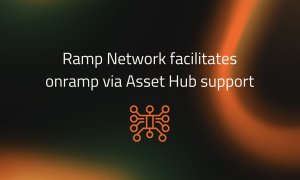How to Generate Widespread Adoption of Cryptocurrencies
Several barriers have impeded the widespread adoption of cryptocurrencies. One of the main issues has been accessibility

Several barriers have impeded the widespread adoption of cryptocurrencies. Education and financial literacy have created some trepidation when using cryptocurrencies as a payment mechanism or an investment. One of the main issues has been accessibility. Technical resources and the delay in addressing software that can provide the average user access have been a thorn in the side of crypto access. Cryptocurrency is a digital coin; at its root, it can be a payment mechanism instead of fiat currencies. This basic concept escapes many potential digital currency users; therefore, its use has yet to garner widespread adoption.
Basics of Financial Literacy
For those with traditional financial literacy knowledge, the concept of digital monetary coins seems commonplace. For those who do not understand, the ideas can be very challenging. Financial literacy measures questions assessing basic knowledge of several fundamental concepts in financial decision-making: knowledge of interest rates, interest compounding, inflation, and risk diversification. Studies have found that a minority of adults, approximately 33% worldwide, are financially literate.
Conceptually, with only a third of the adults understanding the basic concepts, it’s hard to imagine that more would understand the concepts of decentralized finance and the cryptocurrency world. To successfully have someone enter the cryptocurrency world, they have to have a general understanding of traditional finance. For online trading of cryptocurrencies to evolve, there is a greater need for further education in basic literacy and the technology used to generate digital currency.
Regulation and Piece of Mind
While the decentralized world of cryptocurrencies seems attractive to many, some would rather see firmer and tighter regulation before they dip their toe into the crypto water. Where most regulated financial institutions have barriers and oversight, cryptocurrency projects bypass these requirements and do not provide documentation to prospective clients.
The Concept Surrounding Blockchain
Most users of fiat currencies understand that their government prints cash and coins and that money can be used and backed by the full faith of their government. While users of fiat currencies might not be thrilled that their governments can also manipulate their sovereign currencies, they don’t understand how an alternative can be helpful.
The concept of using a blockchain where each piece on a ledger is added and is never updated is not part of the financial literacy component worldwide. The technology behind blockchain is not intuitive. Conceptually, the idea of a miner solving a problem to be chosen to verify a transaction before it is added to the blockchain is not easy for everyone to follow.
There is a term used to describe the stress involved in learning about new technologies in the modern world. This term is called technostress. It’s usually defined as the fear of adaption and the inability to cope with the latest computer technologies that generate issues with mental health. When education about a new technology uses jargon that isn’t easy to understand, as is the case in the decentralized currency environment, it’s offputting. Providing simple-to-use videos are articles explaining the concept to non-financial literate individuals that can go a long way toward further adoption of cryptocurrencies.
Teaching jargon and concepts to broader masses to help them understand the uses of digital currency takes effort on both sides. Not only do many individuals need to come up with media to help educate this block, but you also need to get the future adaptors to be incentivized to learn about new types of technology and finance.
Wealth Disparity
The wealth disparity also has created challenges for lower-income individuals to adopt cryptocurrencies. The lack of access to education and limited liquidity has made an enormous barrier. Not only do individuals need to have discretionary income to consider investments they need to feel comfortable using their paycheck to use a currency other than the fiat currency they have always used.
It’s hard to imagine someone who lives paycheck to paycheck using their hard-earned income to accept remuneration in a digital currency without understanding where it can be used and how to purchase goods and services using cryptocurrency. The concept gets even more convoluted when you explain to that person that the digital currency they accept is less regulated than traditional fiat currencies.
The Bottom Line
The upshot is that to make cryptocurrency more widely available and accepted, further education about the space is needed. Suppose only one-third of the adults globally are financially educated. In that case, the barriers to widespread adoption need to go through a period of acceptance at the government level to provide individuals with some security about their investment.
Not only do people need to understand the financial basics to adopt a cryptocurrency, but they also need education in blockchain and the technology used to verify and create the coins they plan to use.









